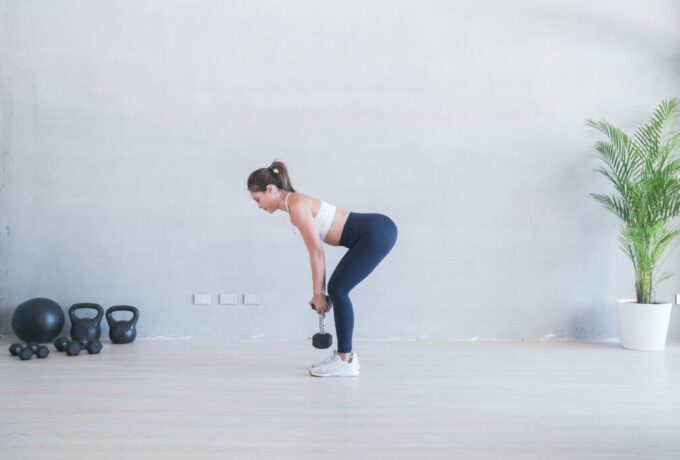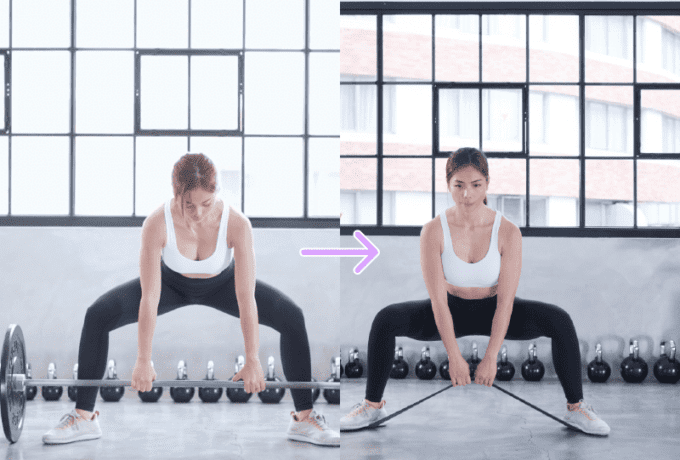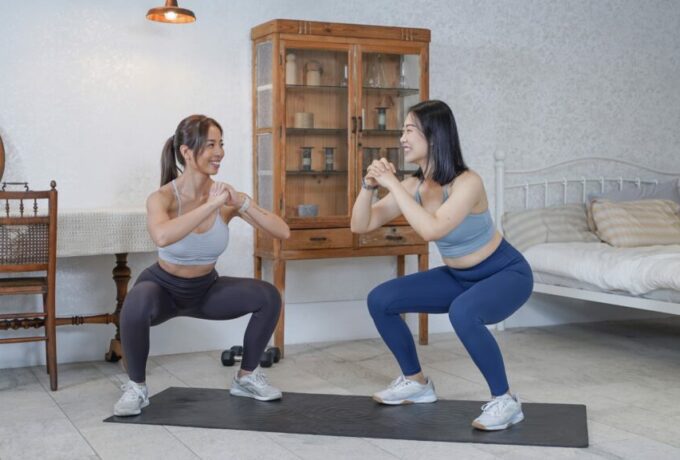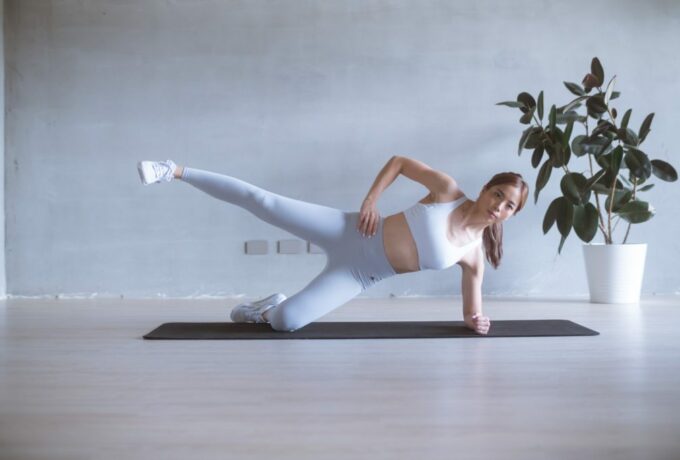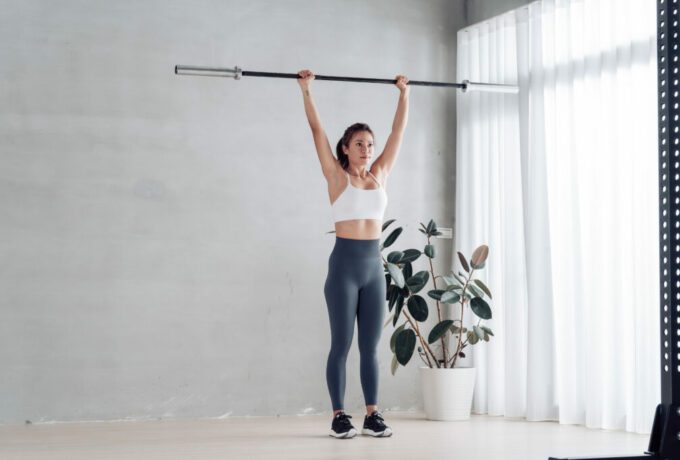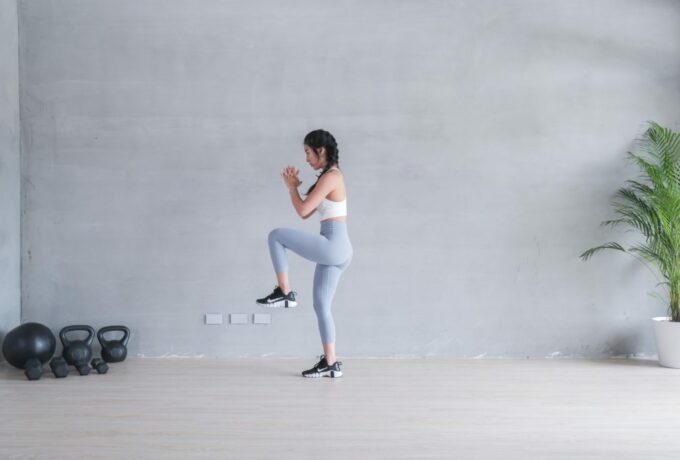Many mothers are eager to regain their pre-pregnancy body and confidence, but it’s important to remember that the birth process can cause physical damage to the body. It typically takes several weeks for the uterus to shrink back to its pre-pregnancy size (about 4-6 weeks for natural birth and 6-8 weeks for cesarean birth). Therefore, it’s recommended to have a doctor evaluate your body’s recovery status before starting any exercise program.
The postpartum period can be an excellent opportunity to start a healthy lifestyle. Small changes can gradually strengthen your body during the recovery period until it returns to its pre-pregnancy exercise state.
During the first 1-2 weeks after childbirth, focus on exercises that strengthen your pelvic floor and deep core muscles.
The pelvic floor is a complex system of muscles and ligaments that surround the genitals and anus, supporting organs such as the bladder, rectum, and uterus. A strong and healthy pelvic floor during pregnancy helps the body cope with the increasing weight of the baby and can reduce back pain.
During childbirth, tears in the pelvic muscles and ligaments can occur, so it’s crucial for mothers to strengthen their pelvic floor muscles after giving birth. If these muscles are not properly strengthened, serious problems such as urine leakage, incontinence, or lower back pain can occur.
The best way to strengthen your pelvic floor muscles after giving birth is to do Kegel exercises.
Kegels involve contracting the same muscles you use to stop urinating midstream. To perform Kegels, find a comfortable position that doesn’t strain or hurt you, and imagine you’re on an elevator going from the first floor to the fourth floor. Exhale and contract your pelvic floor muscles, drawing them upward as the elevator rises. Then, slowly inhale and release your muscles to bring the elevator back to the first floor. It’s important to remember that relaxation of the pelvic floor is just as essential as contraction, so make sure to focus on both.
It’s recommended to spend at least 10 minutes a day doing Kegel exercises, which can also help restore tight vaginal muscle tone. And, as a reminder, don’t perform Kegels while urinating.

Did you start doing crunches and sit-ups right after giving birth to get rid of your tummy? Big mistake! You need to strengthen the deep core first!
Many mothers are eager to eliminate their belly and abdomen after giving birth, thinking that returning to the pre-pregnancy abdominal muscles will help. However, the truth is that you may be exacerbating the separation of the rectus abdominis!
During pregnancy, as your belly gets bigger, the rectus abdominis muscles on each side of your belly are pulled away from each other, and you will see a white line in the middle of your belly called diastasis recti abdominis. It is normal for the rectus abdominis to separate during pregnancy, but it is important to note that postpartum core exercises should not cause the rectus abdominis to separate more. Therefore, it is not recommended to do abdominal crunches right away; you should start with deep core exercises first!
Exercise 1: Kegel lifts + hand stimulation
During each Kegel lift, use your hands to bring the rectus abdominis muscles closer together and repeat the exercise.
Exercise 2: Inward Pelvic Thrust and Deep Core Activation
Lie flat on the mat, place your feet on the floor with your knees bent, lift your abdomen as you inhale, and bring your abdomen inward as you exhale. Imagine your navel and spine continuing to press down toward the floor. Do not let your lower back leave the floor during inhalation and exhalation. Repeat the exercise.
Exercise 3: Simple version of Dead Bug Pose 1
Lie flat on the yoga mat, place your feet on the floor with your knees bent, exhale and lift one foot up, keep the other foot on the floor, inhale and place the foot down, exhale and lift the other foot up, repeat. Please remember that your lower back must be close to the floor during the movement. If your lower back is not close to the floor, it means you have not activated your deep core.
Exercise 4: Simple version of Dead Bug Pose 2
The only difference is that one foot is lifted during exhalation, while the other foot should be straight forward without touching the floor. The distance of the straight foot from the floor is based on how far your lower back can stick to the floor. Breathing is very important; exhale to lift the foot and inhale to lower it.
Exercise 5: Dead Bug Pose
If you can do all five of these exercises, you’ve made significant progress in your deep core. Let’s get ready to do the regular version of Dead Bug Pose. Lie flat on the mat, bend your knees about 90 degrees from the floor, straighten your hands upward, inhale and straighten your right foot forward without touching the floor while straightening your left hand backward, exhale and return to the square, inhale again and straighten your left foot forward without touching the floor while straightening your right hand backward, repeat. Please note that the hands and feet must be close to the floor during the extension, without arching the back. If you are unable to do this, please go back to exercise 4 and repeat the exercise.
2-4 Weeks Postpartum: Recovery, Walking, and More Walking
You can begin to walk slowly during this time, but remember not to rush. Start with just 10 minutes of slow walking and gradually increase the time or speed as your body recovers.
It’s important to maintain proper posture when walking, especially since the weight of your belly during pregnancy may have tilted your center of gravity forward, causing your pelvis to tilt and your toes to point outward. Try to keep your pelvis neutral, your toes pointing forward, and your chest up while walking. You can also incorporate Kegel exercises while walking to further strengthen your core muscles!
If you experience pressure or heaviness in your abdomen or pelvis towards the end of your walk, it’s a sign that you’ve exceeded your body’s capacity. So it’s essential to listen to your body!
Lastly, I recommend spending more time outside in the sun instead of walking on a treadmill at home. Exposure to sunlight will help your tissues heal and reduce the likelihood of postpartum depression.
6 Weeks Postpartum: Low-Intensity, Unassisted Core Muscle Training
Please let your doctor evaluate you before starting any exercise program, especially if you are only 6 weeks postpartum. If your doctor determines that you are ready to begin, it is recommended that you start with low-intensity, low-impact exercises either unassisted or with the help of elastic cords.
For low-impact unassisted training, the Nuli program offers “non-jumping unarmed training” which is designed for those who are slowly returning to exercise. The program includes less than 30 minutes of non-jumping aerobic cardio and basic muscle strength training. Start with two sessions a week and slowly increase the frequency of your training. Nuli also offers a 14-day free experience of the Low Impact Unarmed Training Schedule.
To focus on the muscle groups that have decreased in strength due to pregnancy posture, begin with core, glute, back, and rear leg muscles. Start with basic exercises such as stick pose, dead bug pose, bird dog pose, etc. to activate the deep core before adding curl series.
For glute strengthening, bridge is a great freehand movement that also helps adjust the pelvic position, eliminating lower back pain. You can also use elastic cords to do foot lifts to wake up the glutes.
For back muscles, superman-style handsprings, elastic rope pulldowns, elastic rope rowing and other movements are effective workouts.
For posterior leg muscles, bridge and one-legged bridge exercises are good options.
Remember to listen to your body and rest when needed. If you experience pain or vaginal bleeding during exercise, stop immediately and seek medical attention. Once you have completed 1 to 2 months of low-intensity, low-impact exercises, you can gradually increase the intensity and start doing moderate to high-intensity exercises along with aerobic exercise (brisk walking or stair climbing) once or twice a week. Gradually return to resistance training with a healthy diet to achieve weight loss goals.
You know your body better than anyone else, learn to listen to your body’s voice, need more time to rest, rest well, in the process of exercise does not need to be too anxious.
Reference:
https://americanpregnancy.org/healthy-pregnancy/first-year-of-life/postpartum-recovery-2/
Pregnant and Postpartum Women’s Training Specialist International Certification Course



